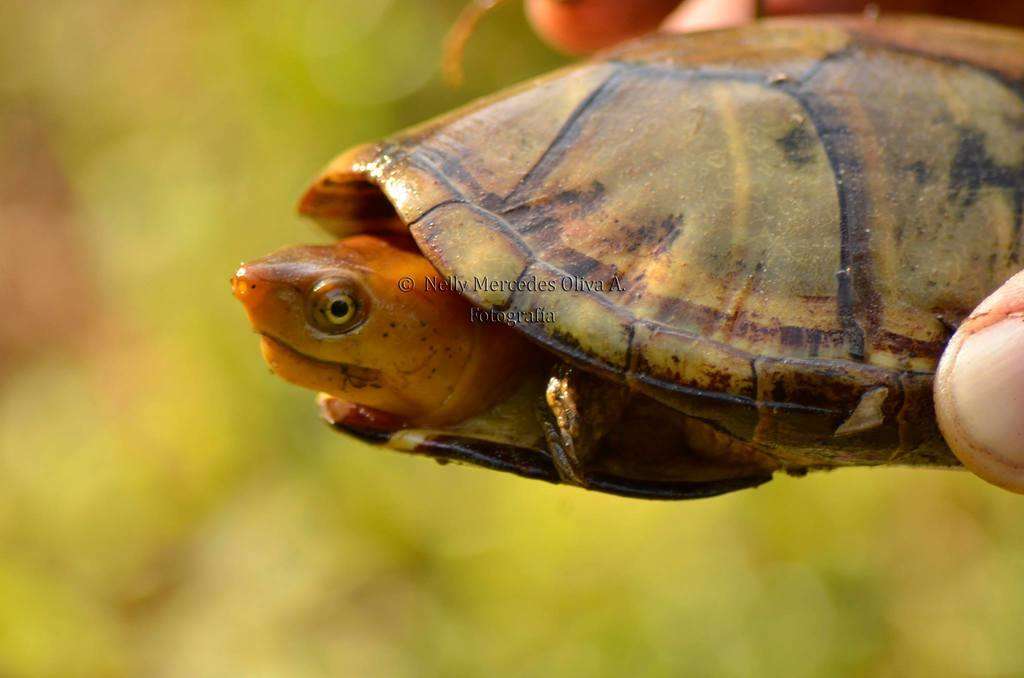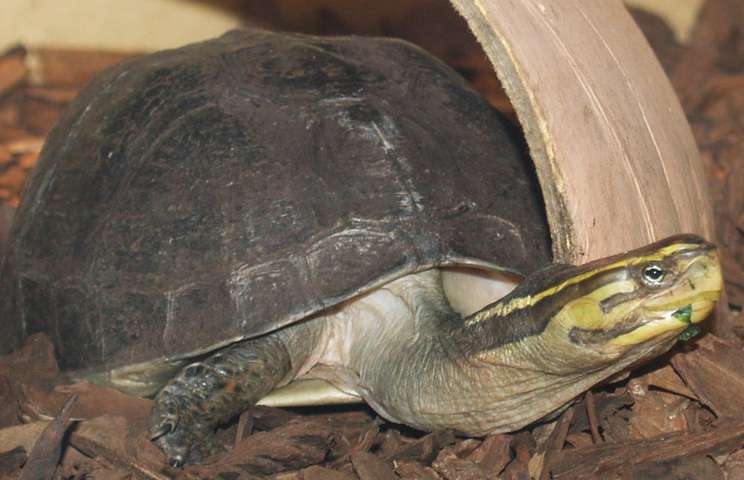
There are Scorpion Mud turtles all over Central and Southern America, including Mexico. Most bodies of water will be home to these aquatic turtles. Their head and neck have vivid orange, red, or yellow markings on black or gray-brown skin.
Scorpion Mud turtles are vicious carnivores that, if necessary, may even commit cannibalism. They are medium-sized and frequently consume smaller reptiles, insects, mollusks, crustaceans, and amphibians.
Care as a Pet

Housing
The aquatic environment of the Kinosternon scorpioides can be transient, semi-permanent, or permanent in the wild. The species favours backwaters and secluded ponds over the channels of large rivers. They can also be found in rivers and streams, albeit less frequently. In particular, populations of Kinosternon scorpioides have been found in south-southeastern Mexico, Belize, Honduras, and Nicaragua in Central America. They are present in Colombia, Bolivia, northern Peru, Brazil, and northern Argentina in South America.
Similar to kinosternidae, an aquatic environment is required to keep scorpion mud turtles as pets. This can be an aquarium or a pond. For the harsh winters, if you are keeping these turtles in a pond, you must bring them indoors. It’s crucial that the turtle’s aquatic habitat has a high water level. The turtle must be totally submerged in clearwater that is deep enough to cover it. The ideal water capacity is at least 40 gallons. Since they don’t attack one another, you can keep multiple scorpion mud turtles in the same aquarium.
Feed
Because they are mostly carnivorous, scorpion mud turtles eat insects, reptiles, and amphibians that are common in their area. They typically consume crustaceans, earthworms, guppies, redworms, minnows, tiny fish, amphibians like frogs and tadpoles, aquatic insects, annelids, and mollusks like snails. Additionally, they forage for animal carcasses, bird eggs, and snake scales. They don’t mind eating on land, even if they prefer to do so in the water. They can be fed specialized aquatic turtle food like the Masuria Aquatic Turtle Diet. To balance out this diet, you should eat goodies like shrimp, earthworms, mealworms, feeder fish, insects, crustaceans, and other invertebrates. Additionally, you can add bits of raw, lean meat, pork, chicken, and tilapia to their diet.
Breeding
About this species’ reproductive behavior, little is known. The average female is known to produce five clutches of 1 to 8 eggs during a reproductive season. Temperature determines the sex of hatchlings.
Table





